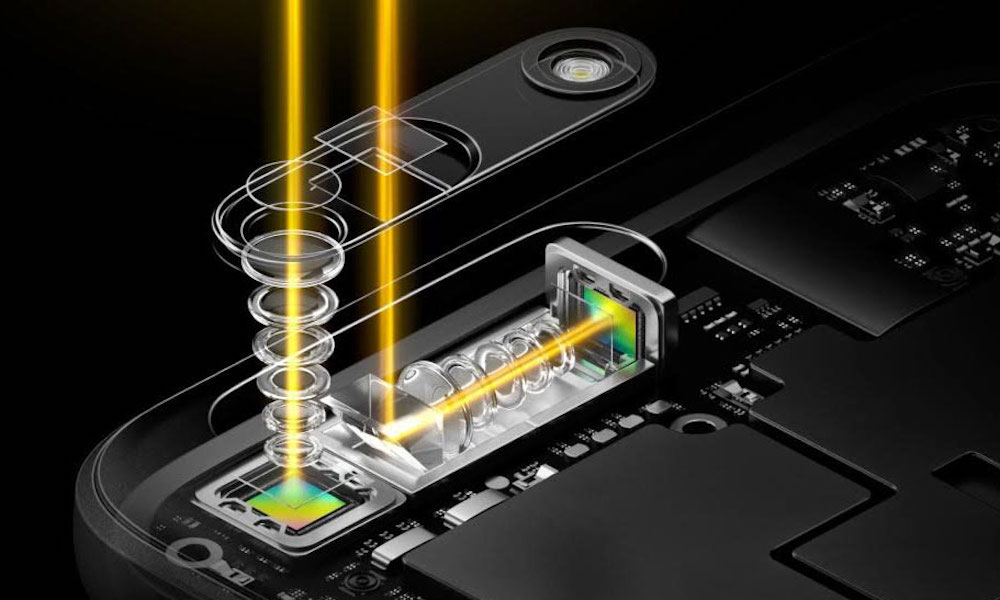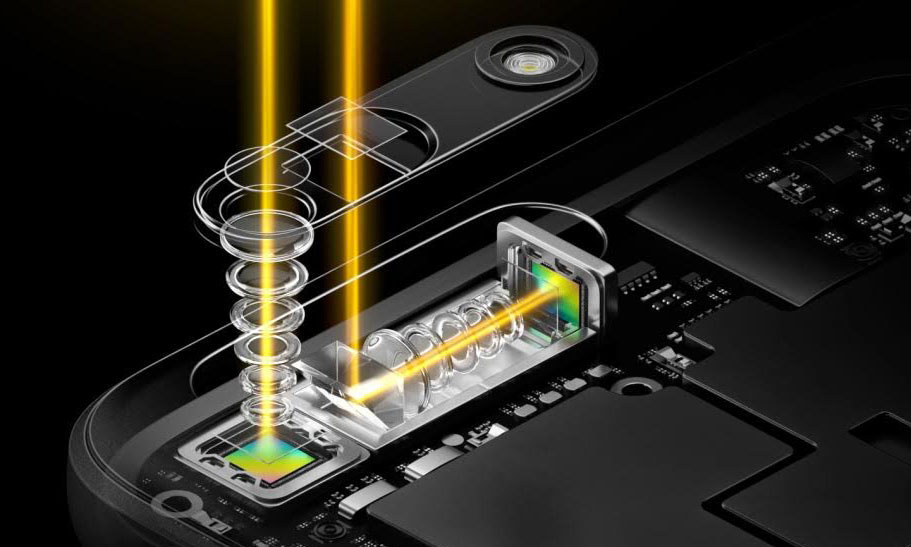Apple’s ‘iPhone 14’ Will Get a Periscope Telephoto Camera
 Credit: Oppo
Credit: Oppo
Toggle Dark Mode
At this point it’s safe to say that Apple’s plans for the iPhone 12 are pretty much locked down; in fact the company’s supply chain has likely already started the production of the new iPhone 12 models for this year, so if there are any surprises about what’s coming to the new iPhones, they’re simply things that are already in there that simply haven’t been revealed yet.
So now that the iPhone 12 has been all but actually released, this has analysts and Apple watchers looking to the next generations of iPhones, and a new report by veteran Apple analyst Ming-Chi Kuo suggests that Apple is still thinking at least a couple of years ahead as to what the camera improvements may look like on the 2022 iPhone.
According to Kuo’s report, as shared by MacRumors, Apple is already lining up its lens suppliers for future iPhone models, and while much of the report covers fairly pedestrian logistical arrangements, one point that stands out is that Kuo predicts that Korean optics company Semco has joined Apple’s list of suppliers in order to provide a new periscope lens that Kuo predicts will be used in the 2022 iPhone.
As Kuo notes, Semco is “the best Korean lens supplier,” and according to 9to5Mac is already supplying Apple with a “ball-based voice coil motor” that will result in autofocus improvements in this year’s iPhone 12. Semco is also expected to provide about half of the supply of periscope lenses that Apple will eventually require for these future iPhone models.
What Exactly Is a Periscope Lens?
Contrary to what the name may suggest, a periscope lens doesn’t protrude from the iPhone the way that the cameras on some Android smartphones do. So-called “pop-up” cameras have become a common way for some smartphone makers to eliminate notches or holes in their front displays, but we’re pretty sure that it’s not Apple’s style to do something so obviously clunky — especially when there are much cooler ways to do it.
In fact, periscope lenses don’t look all that different on the surface. What makes them special is the stacked optics that are used to create greater levels of optical zoom by allowing lenses to be placed farther apart than the thickness of a smartphone would otherwise allow for. The term “periscope” comes not from the idea of the lens protruding from the top of the phone like a submarine periscope does above water, but rather how the optics work inside of a periscope.
A traditional periscope works on the principle of a cylindrical housing with two lenses and a pair of either mirrors or prisms to allow the person looking into the lens on one end to see what’s coming through the lens on the other.
In a smartphone, the same concept is used to provide a greater distance between two lenses than would otherwise be possible with their ultra-slim casings. In the case of a periscope lens, a single mirror is used to bend the light 90 degrees. The camera sensor and interior lens is positioned perpendicular to the main lens — usually pointing “up” toward the top of the smartphone — and then a single mirror is placed at a 45-degree angle to the lens to reflect light into the camera.
This allows the camera sensor to be positioned farther away from the optics, providing a much greater degrees of optical zoom than would otherwise be possible.
In modern smartphones, periscope lens technology made its first major debut in Oppo’s devices about three years ago, where it was able to offer an optical zoom range of up to 5X. However, that certainly isn’t the first time the technology has been used. As GSM Arena notes, there could have been feature phones like the Sharp 902 using the technology just to get a mere 2X zoom as far back as 2004, but as optical lenses improved to provide these zoom factors directly, manufacturers were reticent to take up a lot of extra space inside phones just to go beyond that, especially when many customers were reasonably satisfied with digital zoom.
Beyond that, however, pocketable point-and-shoot cameras have been using the technology for years as well. Most of the ultra-slim cameras of the 1990s that eliminated the motorized protruding front lenses adopted periscope lens technology instead to get the optical zoom factors that customers expected standalone cameras to provide.
What This Means
Today, competing Android smartphones that provide higher levels of optical zoom, such as the 10X boasted by Samsung’s Galaxy S20 Ultra and Huawei’s P40 Pro, already use periscope lenses to accomplish this, so in many ways Apple is late to the party, but that’s also not surprising considering how Apple usually rolls when it comes to adopting new technologies.
After all, many competing smartphones were sporting dual-lens cameras when Apple first unveiled its iPhone 7 Plus back in 2016, and as Android makers began pushing 5X+ optical zoom ranges, Apple continued to stick with its second 2X lens even on the premium iPhone X models. It wasn’t until last year’s iPhone 11 Pro Max that Apple added a third lens, and surprised everybody by making it an ultra-wide instead of an even more telephoto option, while also leaving the 2X lens out of the iPhone 11 entirely.
So Apple has a different way of going about things when it comes to its lenses and cameras, preferring to improve picture quality through computational photography rather than simply going to bigger and better optics and sensors. Even jumping to higher megapixel counts isn’t something Apple seems to be in a hurry to do — although there are rumours that this year’s iPhone 12 will feature a 64MP sensor, we haven’t heard enough confirmation to believe that’s happening this year, although the camera on next year’s iPhone remains an open question.
That said, it stands to reason that Apple is going to have to up its optics game eventually, and a periscope lens system is the only way to provide the kind of optical zoom factors that users will certainly begin expecting as more Android smartphones expand their camera capabilities.
The only really open question right now is how much of an optical zoom we’ll see. This is still dependent on the size of the periscope lens, and even though Apple won’t have to worry about the thickness of the iPhone, it still needs to find enough space inside for the periscope assembly, and the higher the zoom factor, the longer the periscope channel needs to be.
[The information provided in this article has NOT been confirmed by Apple and may be speculation. Provided details may not be factual. Take all rumors, tech or otherwise, with a grain of salt.]








